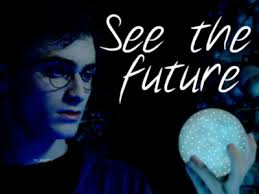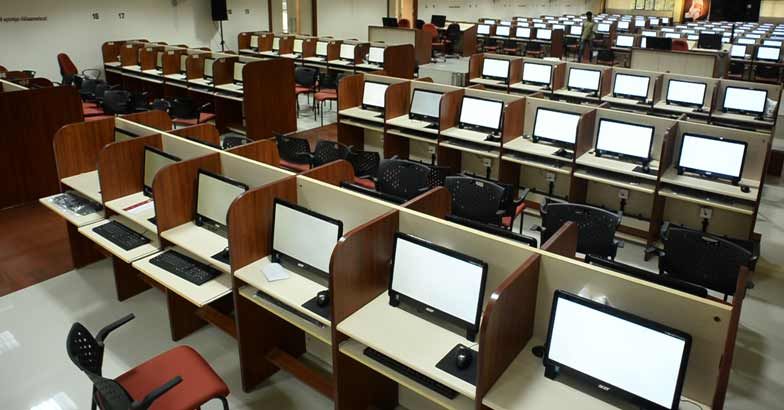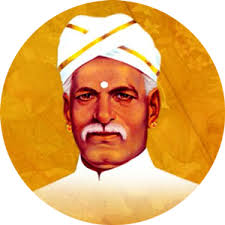How Do You See the Future?

By Shelly Palmer
Named one of LinkedIn’s Top 10 Voices in Technology, Shelly Palmer is CEO of The Palmer Group, a strategic advisory, technology solutions and business development practice focused at the nexus of media and marketing with a special emphasis on machine learning and data-driven decision-making. He is Fox 5 New York’s on-air tech and digital media expert, writes a weekly column for AdAge, and is a regular commentator on CNBC and CNN. Follow @shellypalmer or visit shellypalmer.com or subscribe to our daily email http://ow.ly/WsHcb
Tomorrow will be nothing like today. It may look and feel a lot like today – you’ll get up, have breakfast, exercise, go off to work, etc. But tomorrow will be nothing like today. Tomorrow there will be 600,000 new smartphone activations, 540,000 new computers sold, hundreds of thousands of new cloud computing credentials issued, hundreds more petabytes of data traveling through the Internet, thousands more miles driven by autonomous vehicles, millions of new words interpreted by Natural Language Understanding (NLU) systems, billions of new patterns learned by machines, and billions of new lines of code created. Tomorrow will be nothing like today.
With that in mind, it might be fun to think about how some of things that will make tomorrow different might impact how you spend your day. So let’s play a game about the future called, “What Do You Believe?”
First we will list a set of assumptions. Then we will craft a set of thought experiments to help visualize the future we assume and put some timing around it. Then we will ask two simple questions: (1) Do you believe in the future you’ve envisioned? (2) How will you spend your day in the future you’ve envisioned?
What Do You Believe?
To help you get started, here are a few things I believe. You may (and should) have a different set of theses, but feel free to adopt any of the following:
The big will get bigger, the small will survive, and the middle will perish.
Consumers of every economic stratum will demand “on demand.”
Access is becoming as valuable as ownership – streaming media instead of buying a download, ride-sharing instead of buying a car, etc. You will pay for it with cash, data, or a combination of both.
Anything you can talk to will understand and talk back – Automatic Speech Recognition (ASR), NLU, and related technologies coupled with Augmented Reality and machine learning will have a radically disruptive impact on the way we live our lives.
As a result of ride-sharing, the auto industry will contract by 20 percent.
Traffic will increase because ride-sharing service cars will always be in motion.
AI will start taking white-collar jobs more quickly than experts predict. If just 20 percent of white-collar jobs evaporate, the economic impact will be profound.
New technology will not replace all of the jobs that new technology displaces.
Commoditized products that are hard to pronounce or spell (or speak) or hard to search will quickly become unprofitable.
The convergence of on demand, machine learning, and autonomy will change the world.
Data is more powerful in the presence of other data.
Anything that can be connected will be connected.
Anything that can be hacked will be hacked.
Distribution channel disruption is accelerating.
Due to the increasing world population, we cannot train enough doctors, dentists, and other health care professionals.
Fresh water is a scarce resource, and natural supplies will diminish quickly over the next 30 years.
“Big Food” may go the way of “Big Tobacco” as health care costs rise.
The tools used to access the free and open Internet have enabled users to filter out anything that makes them uncomfortable and have exacerbated the negative effects of confirmation bias.
The entire education system is too expensive and is not producing qualified candidates for newly created jobs.
Climate change will cause sea levels to rise over the next 50 years.
I’m intentionally leaving politics and terrorism off this list – you need to put them back.
I could go on listing my theses and assumptions, but I’m sure you get the idea. Think about the future in a holistic way and try to incorporate as many aspects of your world view as you can. You can categorize them several different ways: personal behavior, consumer behavior (shopping, media, sports, eating, cooking, housing, etc.), industry behavior. Organize your theses in any way that works for you.
What Will Happen?
Let’s think about each assumption. For example: “We cannot train enough doctors.” What probable futures or opportunities does this thesis suggest? Just keep trying to adapt the current healthcare system until it breaks? Invent some new ways to increase efficiency? Create Dr. McCoy’s Medical Tricorder? (That’s a Star Trek reference. Google it, and look up the Tricorder Xprize while you’re at it.)
Add Timing and Changes
Now imagine a future where you have used technology (of any kind) to create a world you’d want to live in. For example: I envision a world where everyone has access to a device that can do basic medical examinations and increase wellness outcomes by diagnosing the most common, treatable diseases and providing access to the cures at an affordable price. Does this exist? Will it exist? Can it exist? If so, when? You cannot answer, “In the future.” Put a number next to it. Two years, five years, 10 years, etc. What will change when this new technology or system exists? Write it down.
Bonus Points
For bonus points, think about how these various probable futures will interact with each other. For example: If there are fewer cars sold, what will happen to the work force? Not just the auto industry work force. What about parking lots? Gas stations? Convenience stores in gas stations? Auto parts stores? Strip malls? And so on.
Hello “New” World!
If you’ve played the game correctly, you will have created a world with some magical and some horrible attributes. It should not be Utopian, and it should not look like a post-Apocalyptic movie. Neither extreme is realistic.
Once you’ve envisioned this world, we get to the first main question: “What do you believe?” You’ve just crafted your vision for the future. You’ve taken your world view, information from others, and thoughts and opinions from everything you know and projected it onto a blank canvas. Is it your vision of the future? Do you believe it? If you don’t, rework your thought experiments until you have high confidence in your beliefs.
Get Ready
Once you passionately believe in the future you’ve envisioned, the next step is to prepare for it. How will you spend your day? What will it take to get there? What investments need to be made? What will your competitors do in such a world? What if … But wait – this stuff won’t happen until the future. I’m just playing a game about what it will be like.
Surprise Ending
It’s not a game. It’s a test. And your answers are your future. So let’s take it from the top: What do you believe?






